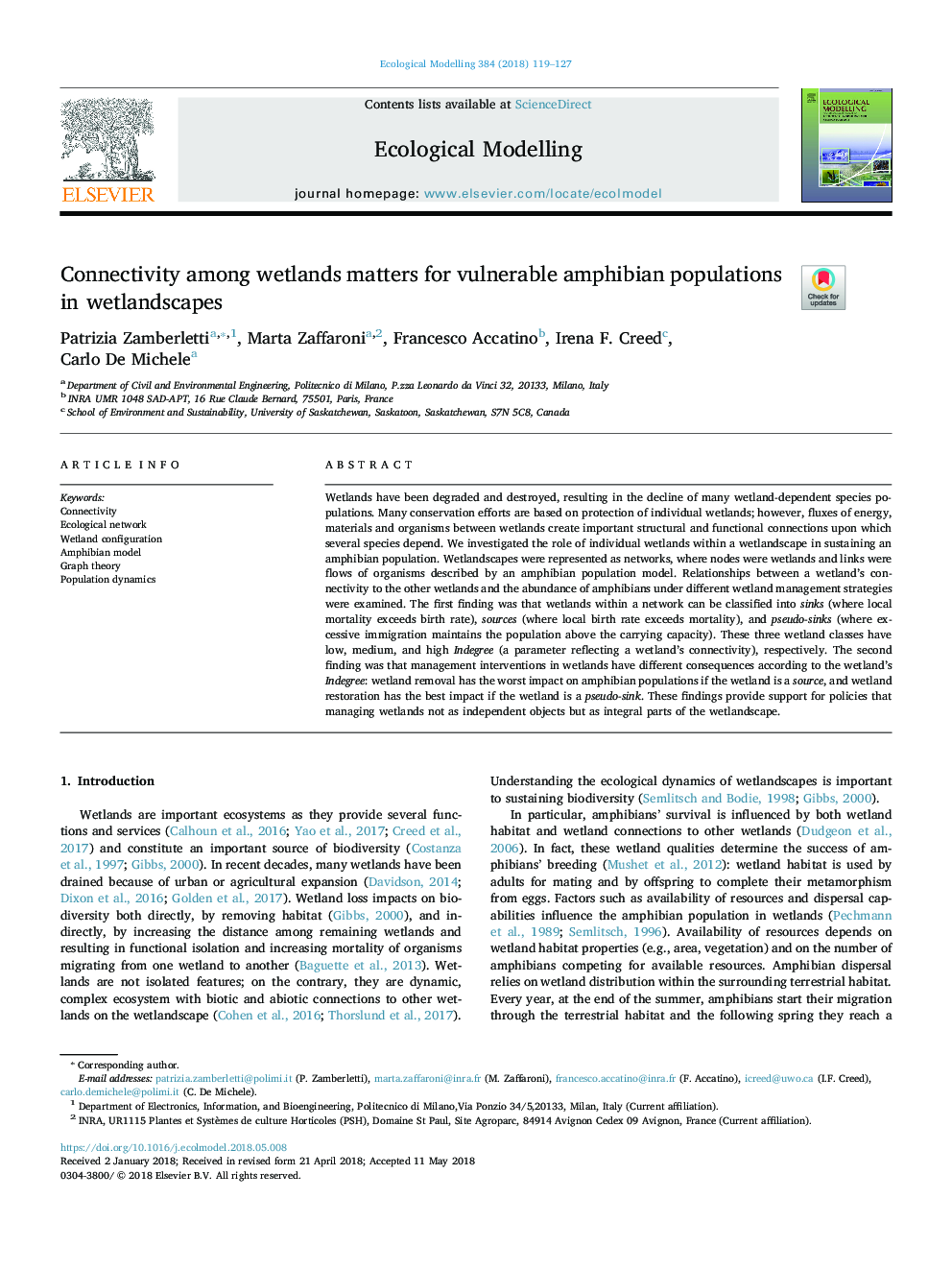| Article ID | Journal | Published Year | Pages | File Type |
|---|---|---|---|---|
| 8845984 | Ecological Modelling | 2018 | 9 Pages |
Abstract
Wetlands have been degraded and destroyed, resulting in the decline of many wetland-dependent species populations. Many conservation efforts are based on protection of individual wetlands; however, fluxes of energy, materials and organisms between wetlands create important structural and functional connections upon which several species depend. We investigated the role of individual wetlands within a wetlandscape in sustaining an amphibian population. Wetlandscapes were represented as networks, where nodes were wetlands and links were flows of organisms described by an amphibian population model. Relationships between a wetland's connectivity to the other wetlands and the abundance of amphibians under different wetland management strategies were examined. The first finding was that wetlands within a network can be classified into sinks (where local mortality exceeds birth rate), sources (where local birth rate exceeds mortality), and pseudo-sinks (where excessive immigration maintains the population above the carrying capacity). These three wetland classes have low, medium, and high Indegree (a parameter reflecting a wetland's connectivity), respectively. The second finding was that management interventions in wetlands have different consequences according to the wetland's Indegree: wetland removal has the worst impact on amphibian populations if the wetland is a source, and wetland restoration has the best impact if the wetland is a pseudo-sink. These findings provide support for policies that managing wetlands not as independent objects but as integral parts of the wetlandscape.
Related Topics
Life Sciences
Agricultural and Biological Sciences
Ecology, Evolution, Behavior and Systematics
Authors
Patrizia Zamberletti, Marta Zaffaroni, Francesco Accatino, Irena F. Creed, Carlo De Michele,
